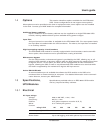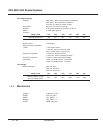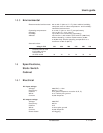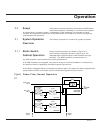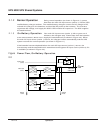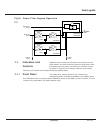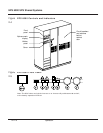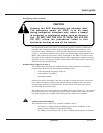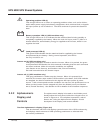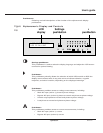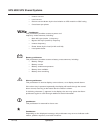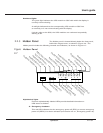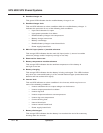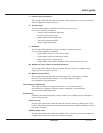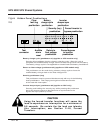
Emergency power off (EPO)
On the left side of the front panel, an emergency power off (EPO) pushbutton is
provided, with a protective cover to guard against inadvertent operation. This
pushbutton, when activated on a UPS module, disconnects the main AC input
(mains 1), and battery power to the module, and disconnects output power to the
SSC’s UPS module AC input bus. When activated on the SSC, it sends a shunt
trip signal to the upstream protective device (Q4S) supplying the bypass AC input
(mains 2) source, and sends an EPO command to each UPS module (see above),
disconnecting the attached load.
Audible alarm (Figure 2-5, item 1)
The audible alarm provides an audible warning to the operator by sounding a
pulsed “beep” when any of the following conditions occur:
• Load transferred to bypass (mains 2)
• Load supplied via battery
• Operating problem
During minor alarm conditions, the alarm sounds at a slow rate and a low sound
level. When the battery approaches the low-voltage shutdown level, the alarm
sounds louder and at an increased rate. If the inverter shuts down, the alarm
sounds loudly and continuously.
An audible alarm reset is located on the hidden panel (see Figure 2-7). Pressing it
will silence the alarm. Should a higher-level alarm condition occur after the reset
has been activated, the audible alarm will sound the new alarm condition.
¡
Load not protected LED (2)
This red LED turns on when any of these conditions occur:
• The load is no longer protected following an inverter shutdown, or the
opening of the isolation circuit breaker (Q5N)
• The battery circuit breaker QF1 is open, making battery power unavailable
Pressing the EPO disconnects the attached load.
The emergency power off (EPO) is to be used
during emergency situations only, where a hazard
to personnel or equipment exists, such as during a
fire. DO NOT USE THE EPO TO TURN THE UPS ON
OR OFF; follow the procedures listed in this
section for turning on and off the inverter.
CAUTION
2 — 5Operation
User’s guide



